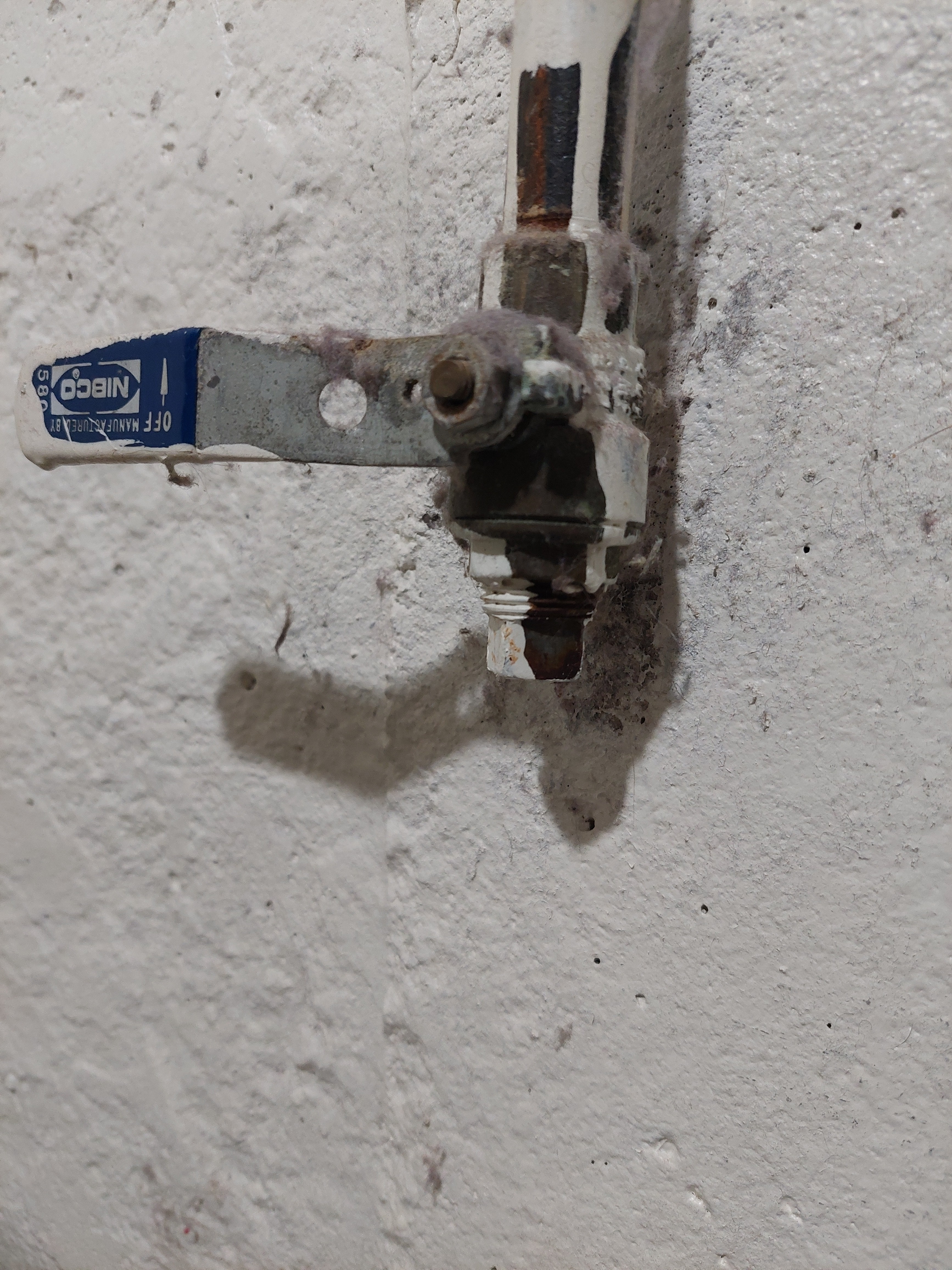this post was submitted on 15 Aug 2024
42 points (88.9% liked)
Home Improvement
11649 readers
2 users here now
Home Improvement
founded 2 years ago
MODERATORS
you are viewing a single comment's thread
view the rest of the comments
view the rest of the comments

could be either. can you get a better look at the coding on the valve itself? painted white, on the right side
Meaningless really. Who's to say it was installed properly to begin with
Aren't water and gas valve physically distinct?
Not necessarily. There's many types of valves obviously, but the most common is W.O.G. (Water, Oil, Gas) used in domestic applications, meaning it can be used for either. Easiest way to tell is the material the rest of the piping is done in.
For example, this looks like 3/8" or 1/2" black iron pipe, meaning it would and should not be used for drinking water, so you could safely assume it's gas as there aren't that many different services running through a common household. You can always open it slightly and see what comes out.
All this being said, please for the love of all that is holy, do NOT install your own gas lines if you don't know what you're doing! It's not as simple as running water, gas has a lot more to consider when piping such as length of run, size of appliance(s), and their respective pressure requirements. Call someone with a gas ticket
Not necessarily from the handle. The actual threading on the pipes should be opposite. Lefty tightly, righty loosely for gas. But that assumes it was done correctly and using the correct materials.
That's not a given, MANY builders don't follow code and local inspectors will still pass the home with obvious and dangerous flaws because they're getting kickbacks.